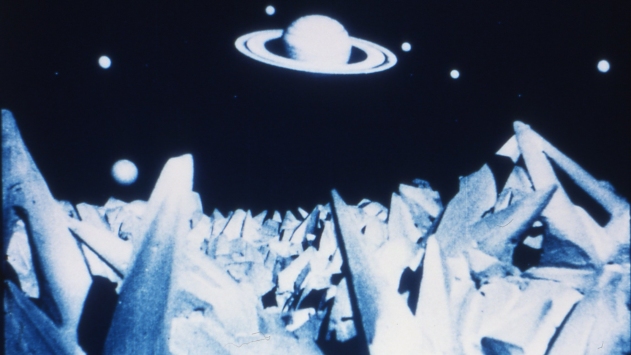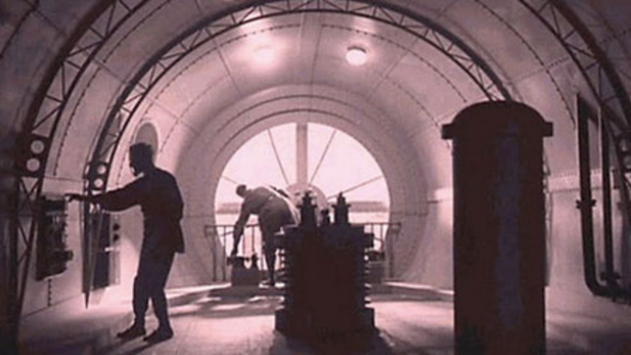
Directed by Hanns Walter Kornblum, OUR HEAVENLY BODIES is a 1925 German silent film. It is one of the first films to represent knowledge about the universe on screen.
Dr. Bob O’Dell was one of the founders and designers of the Hubble Space Telescope and came of age when Sputnik was launched into orbit around the Earth. He is a Distinguished Research Professor of Astrophysics at Vanderbilt University. On March 22, Dr. O’Dell talked at a screening of OUR HEAVENLY BODIES by Nashville’s Belcourt Theatre in Vanderbilt University’s Dyer Observatory. It was accompanied by a live score by the group Coupler and was followed by a guided tour of the Observatory. The event is part of the Science on Screen program, which pairs introductions by scientists of classic, cult, or documentary films. The entire film is available to stream below, as is Dr. O’Dell’s introduction. Science & Film spoke with Dr. O’Dell on the phone prior to the screening.
Science & Film: What does OUR HEAVENLY BODIES explain about astronomy?
Bob O’Dell: It is an excellent film for its time. It was released in 1925. That’s an important period in astronomy because soon after that, our views of the world and the universe changed significantly. At the time it was made, we thought that the whole universe was our own galaxy and that objects we now know as other galaxies were thought to be objects within our own galaxy. The idea of the expanding universe was still a few years off.
It was well-done scientifically. It was characteristic of some films of those days in that people over-acted in it. The German name of the film is WUNDER DER SCHOEPFUNG and it’s translated in the English releases as Our Heavenly Bodies, but actually is better translated as Wonders of the Universe. It talks about everything in the universe starting from the beginning–of course the Big Bang hadn’t been thought of at that time. It includes star formation and how the earth must have formed and how life developed on earth without ever mentioning the word evolution. It is kind of like Carl Sagan’s COSMOS, or Neil Tyson’s recent remake, all compressed into 93 minutes. They do touch on the most important points in the development of our understanding of the universe when the film was put together.
The film was two and a half years in the making, so some of the things in it were very quickly superseded by new knowledge. But, it took on the impossible job of explaining everything about astronomy and our knowledge of the earth that includes geology, into an hour and a half. It’s interesting, it has things like people in a spacecraft leaving the earth and visiting not only all the objects in the solar system but also nearby stars and clusters of stars. There is one egregious error in that it has the travelers go faster than the velocity of light, and that is not possible. I looked up the publication record of one of the four consultants. They were all very classical astronomers. They were at the Potsdam Observatory near Berlin and did old-fashioned astronomy, so they were trained as old-fashioned astronomers and probably were ill-equipped in terms of physics and did not understand that the velocity of light is an absolute speed limit. Kornblum did his best by drawing in people from the major observatory in Germany. Perhaps it was created at Babelsburg, very near the Potsdam Observatory.

S&F: Is it fair to say that the film is a good representation of the scientific understanding of its time?
BO: Oh yes. It is a very complete and largely accurate view of science at that time. It projected into technology that did not exist at that time, like space travel.
S&F: Were a similar film to be made today, our current understanding of the world would result in a very different film, yes?
BO: Vastly more detailed. The basic change would be that our nearby stars are not the only components of the universe but rather that we are an infinitesimal speck in a much larger universe.
S&F: Do you still think there is something people can learn from watching the film today?
BO: I wouldn’t show it in an elementary astronomy class except for entertainment. It shows, however, how much our view of the universe has changed.

S&F: What was it like coming of age just as Sputnik was launched? Did that affect you going into the field of astronomy?
BO: It made it realistic. I had a childhood interest in astronomy. Sputnik occurred my sophomore year in college and until then there just hadn’t been many jobs in astronomy, because of little national support. But that all changed with Sputnik, so I could see the opportunity to enter a field I had always wanted to be in.
S&F: How did that interest develop?
BO: There was a free weekly newsletter called Our Weekly Reader. When I was in the fifth grade there was a lot of the news was about the 200-inch telescope that was just coming into operation. The first wonderful pictures came out stimulated my interest. I can remember in the sixth grade writing a one-page paper on what I wanted to be doing in 25 years and I wrote that I wanted to be an astronomer using the 200-inch telescope at Palomar. As it turns out, it did not take 25 years.
S&F: How old were you when you first used that telescope?
BO: I guess I was 27.
S&F: Do you think people watching OUR HEAVENLY BODIES today could be inspired to go into the field of astronomy?
BO: Probably not. Belcourt is an alternative movie house. It is oriented to millennials. Showing this film is a continuation of their normal types of screenings. Having live music will be a major attraction to the people who come to it, rather than the science. I’ve been to many of the similar Silent-Films with Live events there—the last one was Buster Keaton’s THE GENERAL. I’ve seen old Charlie Chaplin films with live music. People will be coming for that experience, the interest in film and interest in music paired together.
The Science on Screen program is funded by the Sloan Foundation. Science & Film keeps an up-to-date listing of Science on Screen programs throughout the year. Previous interviews have been with a clinical psychologist about TRAINSPOTTING and a computer scientist about COMPUTER CHESS.
PARTNERS
TOPICS